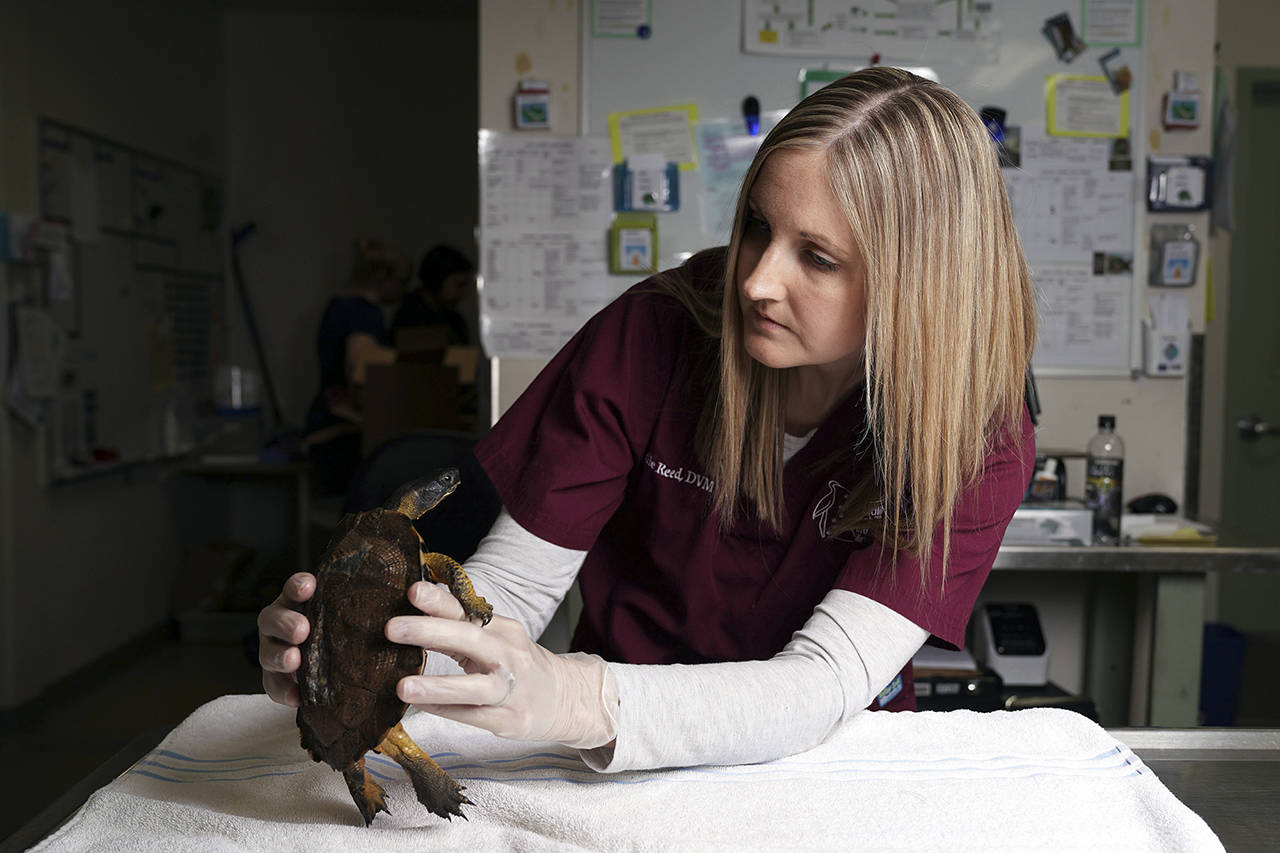By Erica Pearson
Minneapolis Star-Tribune
For a possum with a toothache, a swan with lead poisoning or a box turtle with a broken shell, Dr. Leslie Reed is a true lifesaver.
The veterinarian delights in the sheer variety and challenge that each day brings at the Wildlife Rehabilitation Center of Minnesota. There, she has created a dentistry practice, cultivated a specialty in turtle shell repair and built a training program that draws students from around the world.
“I could easily see, between new admits and rechecks, a couple hundred patients a day — from a baby mouse all the way up to a bobcat,” Reed says.
Summer is the busiest season at the Roseville hospital. That’s when hurt, sick or abandoned baby animals fill five nursery rooms, watched over and fed by volunteers.
Reed was a veterinary student on a University of Iowa field trip when she first visited the nonprofit wildlife center, one of the nation’s busiest with more than 13,000 patients a year.
When a position opened in 2009, she moved to Minneapolis for the job. Now a senior veterinarian and director of veterinary education at the 15,000-square-foot center, she lives with her husband and two children on a hobby farm with a menagerie of rescued animals.
Reed loves wildlife dentistry (“Once you yank that nasty tooth, they just feel so much better,” she says) and frequently works on the teeth of a creature she calls “misunderstood,” “adorable” and her “favorite” — possums.
The sad part about her job is that many patients end up at the center after suffering human-induced trauma: swans poisoned after nibbling disintegrated lead fishing weights, birds shot by darts or pellet guns, turtles hit by cars.
Once Reed and her co-workers get involved, they can often undo much of the damage — giving swans medication that binds to the lead, or surgically removing a dart from a dove’s side. And, of course, fixing turtle shells. She uses a combination of wires, screws and adhesives to reset the shells, which are living bone and will heal.
“It’s like a puzzle and you have to figure out how all the pieces go back together. It’s kind of like arts and crafts, basically,” she says. “It’s rewarding, because once you get it all put back together and stabilized, it takes about six to eight weeks for them to completely heal, and a lot of them do great.”


